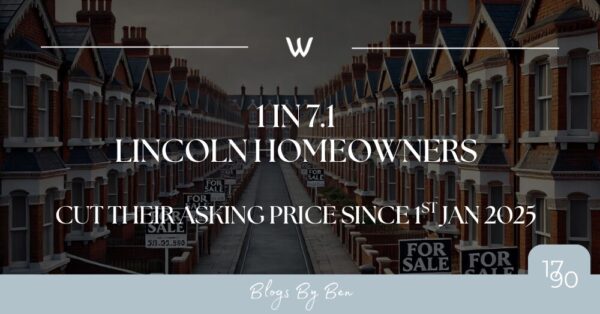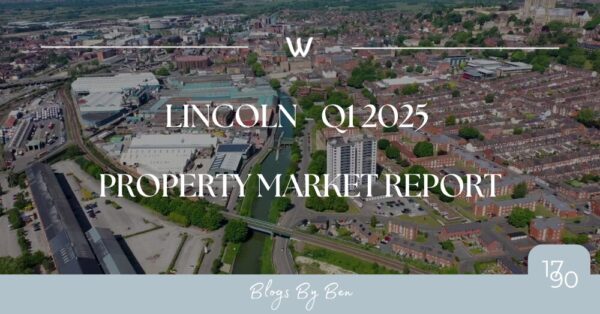Call me old-fashioned and nostalgic, but I am fond of terraced houses.
I’ve conducted some research that my fellow readers of the Lincoln Property Market Blog will find intriguing!
Architecturally speaking, the terraced or townhouse has been prevalent in the UK since the late 1600s. It involves a row of symmetrical houses that share side walls.
The credit for the first terraced houses goes to Monsieur Barbon, a Frenchman who constructed them around St. Paul’s Cathedral during the rebuilding phase after the Great Fire of London in 1666.
Interestingly, the French invented the terraced house concept around 1610-15 in the Le Marais district of Paris, featuring planned squares and properties with identical facades. However, it was during the 1730s that terraced houses truly flourished in London and, of course, in Bath with the magnificent Royal Crescent.
Let’s focus on Lincoln.
Many of our terraced houses in Lincoln were built during the Victorian era.
Terraced houses emerged as a response to the Industrial Revolution, as people flocked to towns and cities for employment.
Terraced houses provided decent, habitable accommodation, offering an escape from the slums.
Interestingly, most Lincoln Victorian terraced houses followed a standard design: a ‘posh’ front room for high days and holidays, a back reception room where the family resided daily, and a scullery attached to it (scullery – a small kitchen at the rear of a house used for washing pots and other dirty household work). Off the scullery, there was a door leading to a rear yard where you would traditionally find the privy or outside toilet! There were two good sized bedrooms upstairs, with a smaller third bedroom (or nursery) accessed directly through the second.
Notably, in 1875, the Public Health Act mandated that each house should have 108 square feet of liveable space per main room, access to running water, an external toilet/privy and rear access for waste collection (as there were no public sewers in Lincoln at that time, at least not where these “workers'” terraced houses were built).
During the 1960s and 70s, an indoor WC and a bathroom were installed (often in that third bedroom or as a ground-floor extension of the scullery). In the 1980s, gas central heating became prevalent, and since then, there has been a continuous replacement of uPVC double glazing.
Two-storey terraced houses started to be built again in the 1960s, yet they were marketed as ‘townhouses’. Since the early 2000s, with the price of building land rising so quickly, new homes builders started to build three-storey townhouses.
The humble terraced/townhouse never seems to go out of fashion!
Looking at the makeup of all the Lincoln properties, some fascinating numbers appear.
Of the 42,509 households in Lincoln …
- 8,452 are detached properties
- 13,061 are semi-detached properties
- 12,602 are terraced/townhouse properties
- 8,366 are apartments/flats
- … the rest being made up of caravans and mobile homes.
Next, looking at the percentage compared to the national average is interesting.
- 19.9% are detached properties (national average 26.1%)
- 30.7% are semi-detached properties (national average 31.4%)
- 29.6% are terraced/townhouse properties (national average 22.5%)
- 19.8% are apartments/flats (national average 20.1%)

So how has the Lincoln terraced house risen in price?
The average price for a Lincoln terraced house in spring 1995 was £31,248. Today, that figure stands at £173,574, a rise of 455%.
Not bad when you consider the overall average in Lincoln during the same time frame has only risen by 438%.
Terraced houses in Lincoln often go unnoticed by buyers, despite offering flexible and sizeable accommodation. It’s time to shed light on the untold story of these charming homes. If you’re thinking of selling your terraced house and want to ensure you get the best price, look no further. As an experienced estate agent specialising in Lincoln properties, I’m here to offer you expert advice tailored to your needs.
Remember to consider the potential of the terraced house.
These properties have a rich architectural history and have provided significantly more habitable accommodation for generations. From the standard Victorian design with its distinct rooms and rear yard to the modern-day improvements of indoor facilities and central heating, from the second coming of the terraced house in the last 50 years with the ‘townhouse’, Lincoln’s terraced houses have continually evolved to meet the needs of their residents.
Call me if you’re ready to sell your terraced house and want to maximise its value.
As a local estate agent, I deeply understand the Lincoln property market. With my expertise and personalised guidance, we can navigate the selling process together, ensuring you achieve the best possible outcome.
Contact me today to unlock the full potential of your Lincoln terraced house and secure a successful sale!


